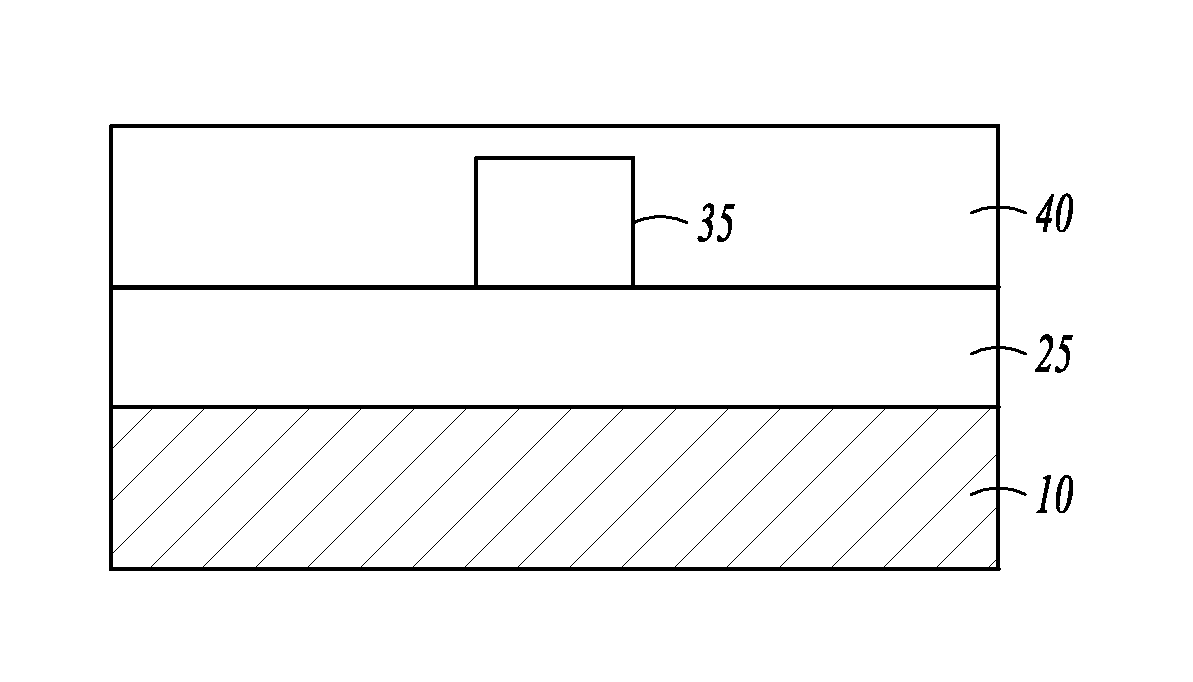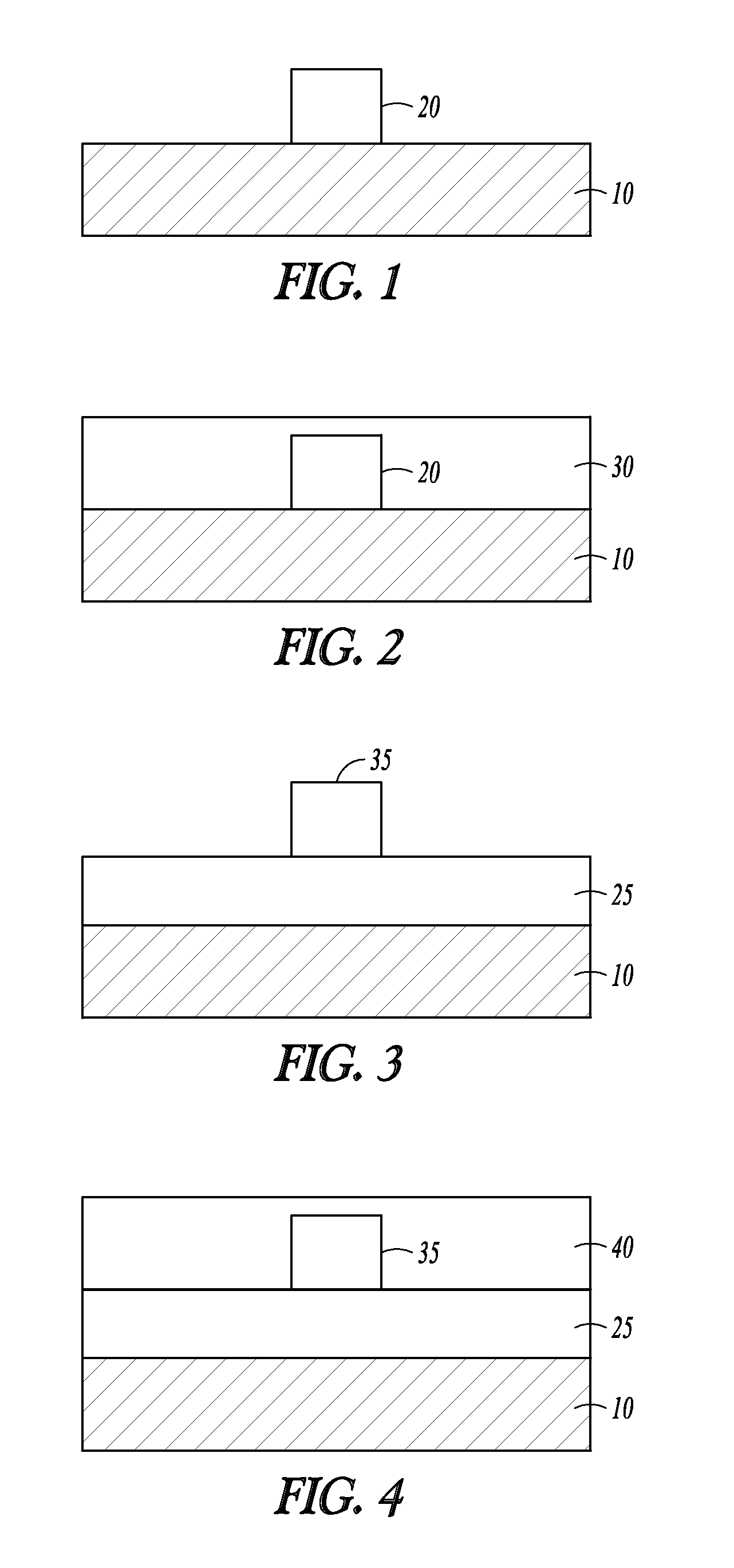Epoxy-functional radiation-curable composition containing an epoxy-functional siloxane oligomer for enhanced film retention and adhesion during solvent development
a radiation-curable composition and epoxy-functional technology, applied in the direction of photosensitive materials, instruments, photomechanical equipment, etc., can solve the problems of inconvenient and often inefficient high-temperature processes for fabricating these inorganic materials, and achieve the effects of reducing cracking, increasing flexibility, and reducing cracking
- Summary
- Abstract
- Description
- Claims
- Application Information
AI Technical Summary
Benefits of technology
Problems solved by technology
Method used
Image
Examples
example 1
Preparation of Epoxy-Functional Organopolysiloxane Resin (A1)
[0086]A solution of a silanol-containing methylphenylpolysiloxane resin was prepared by subjecting a mixture of phenyltrichlorosilane (505 g) and dimethyldichlorosilane (47 g) to co-hydrolysis and condensation in a mixture of toluene (50 g), 2-propanol (142 g), and water (142 g). The solution was neutralized with an aqueous solution of sodium hydrogencarbonate and washed with water, which was subsequently completely removed under heating. 2-(3,4-Epoxycyclohexyl)ethyltrimethoxysilane (226 g) and a 50 wt % aqueous solution of potassium hydroxide (2 g) were added to the remaining solution, and water, methanol and toluene were removed by azeotropic dehydration under heating and agitation. In the process, an appropriate amount of toluene was added to maintain the solid matter concentration at about 50 wt %. Upon termination of the dehydration condensation reaction of silanol groups, the solution was additionally refluxed for se...
example 2
Preparation of Epoxy-Containing Organopolysiloxane Resin (A2)
[0087]With the exception of using phenyltrichlorosilane (315 g), methyltrichlorosilane (191 g), dimethyldichlorosilane (55 g), and 2-(3,4-epoxycyclohexyl)ethyltrimethoxysilane (262 g) as the starting raw materials, a toluene solution (solid matter content: 490 g) of an epoxy-functional organopolysiloxane resin with an average unit formula of [Me2SiO2 / 2]0.10[MeSiO3 / 2]0.30[PhSiO3 / 2]0.25 was obtained by conducting reactions in the same manner as in Example 1. The number-average molecular weight of the epoxy-functional organopolysiloxane resin was 3700, the phenyl group content was 32 mol %, and the total content of silanol and methoxy groups was 0.9 mol %.
example 3
Preparation of Epoxy-Functional Organopolysiloxane Resin (A3)
[0088]A toluene solution (490 g of solids) of an epoxy-functional organopolysiloxane resin represented by the following average unit formula: [Me2ViSiO1 / 2]0.10[Me2SiO2 / 2]0.05[PhSiO3 / 2]0.30 was prepared by means of the same reaction as in Example 1, with the exception that the starting material was composed phenyltrichlorosilane (423 g), dimethyldichlorosilane (23.5 g), trimethoxychlorosilane (39.5 g), and of 2-(3,4-epoxycyclohexyl)ethyltrimethoxysilane (269 g). In the obtained epoxy-functional organopolysiloxane resin, the number-average molecular weight was 1700, the content of the phenyl groups was 44 mole %, and the total content of the silanol groups and methoxy groups was 0.6 mole %.
PUM
| Property | Measurement | Unit |
|---|---|---|
| wavelength | aaaaa | aaaaa |
| refractive index | aaaaa | aaaaa |
| mol % | aaaaa | aaaaa |
Abstract
Description
Claims
Application Information
 Login to View More
Login to View More - R&D
- Intellectual Property
- Life Sciences
- Materials
- Tech Scout
- Unparalleled Data Quality
- Higher Quality Content
- 60% Fewer Hallucinations
Browse by: Latest US Patents, China's latest patents, Technical Efficacy Thesaurus, Application Domain, Technology Topic, Popular Technical Reports.
© 2025 PatSnap. All rights reserved.Legal|Privacy policy|Modern Slavery Act Transparency Statement|Sitemap|About US| Contact US: help@patsnap.com



